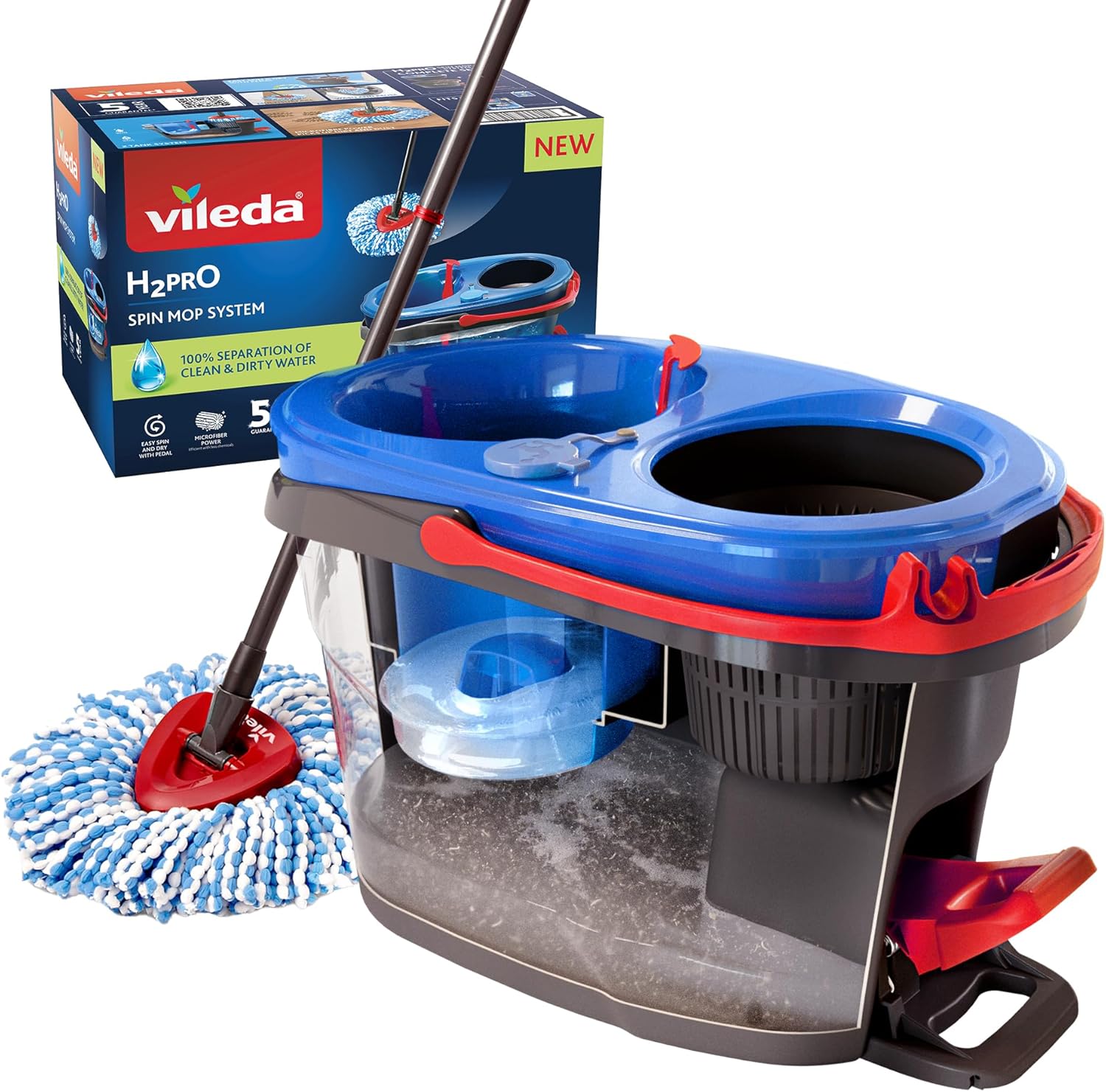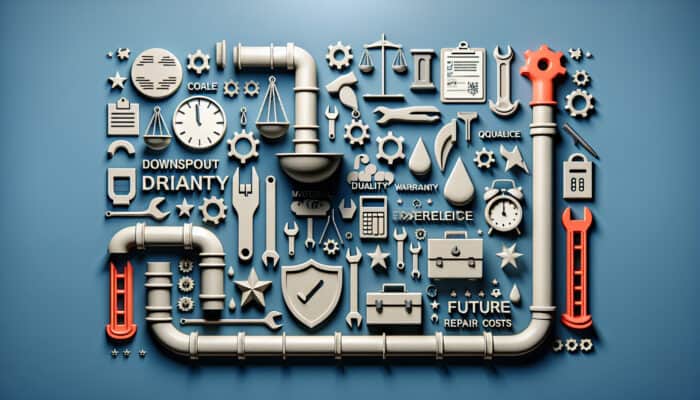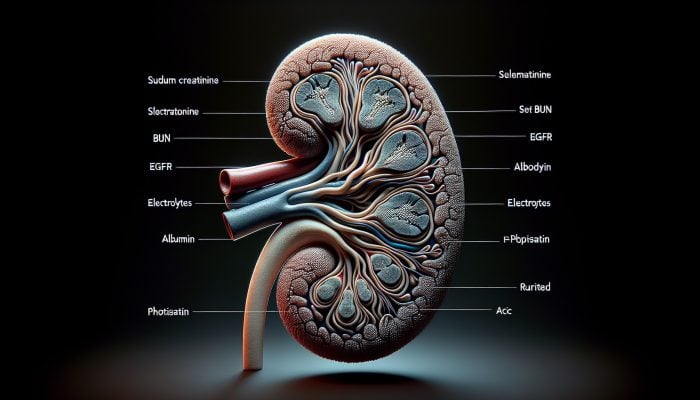Unlock the Power of TikTok Trends: Key Insights for Effective Marketing
Understanding the Essence of TikTok Trends

Engaging with TikTok trends is essential for brands aiming to achieve viral success in video marketing. These trends encapsulate a vibrant element of the platform’s culture, often manifesting as popular challenges, catchy dance routines, or innovative content formats that attract user attention. While these trends typically have a brief lifespan, their impact can lead to significant increases in brand visibility and user engagement for those who respond quickly. Presently, some of the most captivating TikTok trends include:
- The #DanceChallenge – Users replicate catchy dance routines that capture widespread interest and engagement.
- The #LipSyncChallenge – Participants perform lip-syncs to trending audio clips that resonate with viewers on an emotional level.
- The #Storytime format – Creators share intriguing personal stories that captivate and engage audiences.
- The #DIYChallenge – Users showcase innovative craft or cooking techniques that inspire creativity and participation.
- The #BeforeAndAfter transformation – Highlighting striking changes in various scenarios such as home renovations or personal makeovers.
The viral nature of these trends is particularly noteworthy, often fueled by catchy sounds and unique hashtags. By actively participating in these trends, brands can reach broader audiences and significantly enhance their online presence.
Are You Ready to Dive Into TikTok Trends?
Strategies for Spotting Trending Content on TikTok
To effectively identify trending content on TikTok, brands must employ careful observation combined with the right analytical tools. Regularly exploring TikTok’s Discover page, which highlights popular content, along with utilizing trend analysis tools can keep brands ahead of the curve. Here are three indispensable tools for tracking trends effectively:
- TrendTok – A dedicated mobile application that tracks TikTok trends and provides valuable analytics for deeper insights.
- TikTok’s Discover Page – A built-in feature that showcases currently popular trends and user-generated content.
- Google Trends – An external tool that allows brands to gauge interest in specific trends over time, offering context and depth.
By leveraging these invaluable resources, brands can ensure they stay relevant and capitalize on emerging opportunities presented by trends before they diminish in popularity.
The Importance of Timeliness in TikTok Marketing
In the dynamic realm of TikTok, timeliness is a crucial element for success. Trends can diminish in popularity within days or even hours, making it vital for brands to understand the lifecycle of trends for effective content strategy planning. Here are several strategic tips for maintaining relevance in this fast-paced environment:
- Set alerts for trending hashtags that align with your brand’s messaging and values.
- Engage with trending content immediately after it surfaces to ensure a relevant presence.
- Participate in trends that resonate with your brand’s core values and marketing objectives.
- Follow TikTok influencers who actively create trending content to stay informed.
By implementing these strategies, brands can not only take advantage of existing trends but also position themselves as timely and relevant contributors in the ever-evolving TikTok landscape.
Maximizing Engagement Through TikTok Trends

Effectively leveraging trending content on TikTok can significantly boost visibility and engagement rates. However, it’s essential to adapt these trends in a way that reflects your brand’s unique voice and core values to foster genuine connections with users. Here are some strategies for successfully adapting trends:
- Incorporate your brand’s distinctive personality into the trend to ensure it stands out.
- Create unique challenges that resonate with current trending themes while driving user engagement.
- Collaborate with TikTok users to encourage community involvement and participation.
- Utilize storytelling techniques to seamlessly weave your brand message into the trend.
Authentic engagement flourishes from genuine connections; aligning trends with sincere messaging can lead to impactful interactions and strengthen your brand’s presence on the platform.
Effective Strategies for Capitalizing on TikTok Trends in Viral Video Marketing
How Brands Can Harness TikTok Trends for Maximum Impact
Brands can strategically utilize TikTok trends to enhance their visibility and engagement rates. The key is to ensure that these trends resonate with the core values of the brand while maintaining authenticity. Here are some actionable steps for brands looking to engage effectively with trends:
1. Conduct Comprehensive Research: Keep a close eye on popular hashtags and challenges that align with your target demographic to tailor your content effectively.
2. Engage with Creativity: Add a unique twist to trending formats to enhance their relevance and relatability to your brand.
3. Collaborate with Influencers: Partner with influencers who can lend credibility and a fresh perspective to your trend engagement efforts.
4. Iterate and Analyze: Assess the performance of your trend-related content and refine your approach based on the insights gained.
When brands connect authentically with trends, they build community ties and establish emotional connections with viewers, resulting in a loyal following that transcends individual trends.
Key Factors Behind Successful TikTok Trends

Successful TikTok trends typically embody simplicity and emotional resonance, making them both accessible and engaging for users. Several factors critically influence the psychology behind the success of trends:
1. Simplicity: Trends that are easy to understand and replicate encourage broader participation and interaction, enhancing their reach.
2. Emotional Connection: Content that evokes feelings of joy, nostalgia, or excitement tends to garner higher engagement, resonating with viewers on a personal level.
3. Community Participation: Trends that inspire user-generated content foster a sense of belonging among participants, driving further engagement.
4. Relatability: Trends that reflect shared experiences resonate more deeply with audiences, enhancing their engagement and participation.
By comprehending these principles, brands can develop content that not only aligns with trends but also forges meaningful connections with users, significantly increasing the likelihood of going viral.
Case Studies of Successful Trend Engagement
Reviewing successful campaigns can provide invaluable insights for brands aiming to utilize TikTok trends effectively. A prominent example is the #SavageChallenge, where a straightforward dance transformed into a global sensation, prompting brands like Chipotle to creatively engage by featuring employees participating in the trend. Another noteworthy instance is Ocean Spray’s viral video featuring Nathan Apodaca, which resulted in a substantial increase in sales for the brand, showcasing the power of authentic engagement with trends. These case studies illustrate how brands can harness the momentum of trends to create impactful, viral content that resonates with audiences worldwide.
Innovative Approaches to Content Creation Around TikTok Trends
Identifying Content Types That Deliver Results on TikTok
Creating compelling content that effectively leverages TikTok trends involves a focus on entertainment, education, and emotional engagement. The most successful TikTok videos are typically concise, engaging, and to the point. Key elements that contribute to a viral TikTok video include:
1. Hook: Capture the viewer’s attention within the first few seconds to prevent users from scrolling past your content, ensuring maximum exposure.
2. Relatable Content: Develop scenarios or narratives that viewers can personally connect with, enhancing relatability and shareability.
3. Creativity: Utilize unique angles, effects, or storytelling techniques to differentiate your content from others, making it memorable.
4. Call to Action: Encourage users to participate, share, or connect with your content in a meaningful way, fostering engagement.
By emphasizing these critical elements, brands can create impactful content that resonates with TikTok’s audience, thereby increasing the likelihood of achieving viral status.
Tools and Techniques for Elevating Content Quality
In the realm of TikTok content creation, employing the right tools can significantly enhance video quality and the overall production experience. Techniques such as storytelling and swift editing are vital for effectively engaging audiences. Here are the best practices for editing TikTok videos:
1. Utilize Advanced Editing Tools: Take advantage of TikTok’s built-in editing features for seamless transitions and engaging effects that captivate viewers.
2. Incorporate Music and Sounds: Use trending audio tracks to align your content with popular trends, boosting its appeal and relevance.
3. Experiment with Visual Effects: Apply filters and engaging visual effects to create visually captivating content that draws in viewers.
4. Storyboarding: Plan your content to ensure a coherent flow and engaging narrative that keeps viewers hooked from start to finish.
Implementing these techniques will not only elevate the quality of your TikTok videos but also improve user engagement and retention, making your content more impactful.
Maximizing Impact Through Influencer Collaborations
Collaborating with influencers can exponentially expand a brand’s reach and credibility on TikTok. However, choosing the right influencer is crucial for the success of the campaign. Here are steps for effectively selecting an influencer for your TikTok initiatives:
1. Align Values: Ensure the influencer shares similar values and messaging with your brand for an authentic collaboration that resonates with audiences.
2. Evaluate Engagement Metrics: Focus on influencers with a strong engagement rate rather than just a high follower count, ensuring genuine interactions with their audience.
3. Assess Audience Fit: Analyze whether their audience aligns with your target demographic to maximize impact and relevance.
4. Allow Creative Freedom: Provide influencers with the flexibility to interpret your brand message in their unique style, fostering authenticity and connection.
By following these steps, brands can establish genuine connections that resonate with TikTok users, resulting in increased visibility and potential sales growth.
The Role of Hashtags and Challenges in TikTok Marketing
Utilizing trending hashtags and participating in challenges is essential for boosting visibility on TikTok. Effectively identifying and implementing impactful hashtags involves strategic planning. Here’s how to optimize your approach:
1. Research Trending Hashtags: Use TikTok’s Discover page to uncover popular hashtags that align with your content and messaging.
2. Create Branded Hashtags: Encourage user participation by developing specific hashtags for your brand challenges, fostering community involvement and creativity.
3. Engage with Community Challenges: Participate in existing challenges to tap into established audiences and enhance your visibility on the platform.
4. Monitor Performance: Keep track of how specific hashtags perform to continually refine your strategy and approach based on audience engagement.
By identifying and leveraging the right hashtags and challenges, brands can effectively maximize their reach and engagement on TikTok, resulting in a more significant impact.
Measuring the Impact of TikTok Trends
Key Metrics to Monitor for Success
In the realm of TikTok marketing, tracking the appropriate metrics is vital for evaluating success and effectiveness. Key metrics to prioritize include views, likes, shares, and comments. Engagement rates and follower growth also serve as critical indicators of campaign performance. Here are the essential metrics for TikTok campaigns:
- Views: The total number of times your content has been viewed, providing insight into the reach of your content.
- Likes: A measure of how well your content resonates with viewers, indicating approval and engagement.
- Shares: Reflects how likely viewers are to share your content with their networks, enhancing visibility and reach.
- Comments: Offers insights into audience engagement and sentiment regarding your content, revealing viewer perceptions and interests.
By focusing on these metrics, brands can objectively assess the impact of their TikTok strategies and make informed decisions to optimize future content effectively.
Effective Engagement Data Analysis Techniques
Understanding engagement patterns on TikTok is crucial for refining future content strategies. Analyzing peak engagement times and audience demographics enables brands to adjust their approaches effectively. Here’s how to leverage engagement data:
1. Identify Peak Times: Use analytics to determine when your audience is most active and adjust your posting schedules accordingly for maximum impact.
2. Segment Audience Demographics: Understand the age, gender, and interests of your audience to tailor content more effectively to their preferences and needs.
3. Track Content Performance: Evaluate which types of content yield the highest engagement to inform future strategies and content creation efforts.
4. Iterate Based on Feedback: Listen to audience comments and feedback to guide adjustments in your content strategy, enhancing relevance and connection.
Engagement data not only provides insights into audience preferences but also empowers brands to craft more targeted and effective content strategies that resonate with their audience.
When to Reassess Your Strategies Based on Performance Data
Regularly reviewing performance data enables brands to make informed adjustments to their TikTok strategies promptly, ensuring optimal results and relevance. Iterative improvements often yield superior outcomes. Here are signs indicating that your strategy may need adjustment:
1. Declining Engagement: If views, likes, and shares show a downward trend, it may be time to innovate and refresh your approach to content.
2. Audience Feedback: Negative comments or a lack of interaction can signal disinterest in your content, prompting a reassessment of your strategies.
3. Poor Conversion Rates: If your content isn’t driving the desired actions or sales, it’s time to reevaluate your strategy and messaging for effectiveness.
4. Trend Evolution: Stay aware of shifts in popular trends and adjust your strategy accordingly to maintain relevance and connection with your audience.
By maintaining an analytical and responsive approach, brands can ensure their TikTok presence evolves in tandem with platform dynamics and audience preferences.
Assessing Trend Longevity and Relevance
Evaluating the longevity and relevance of trends is crucial for informing your content timing and strategy. Brands must carefully assess when to adopt or abandon a trend for maximum impact. Here are strategies for effectively navigating trend longevity:
1. Monitor Trend Lifecycles: Track when trends gain traction and when they begin to fade in popularity to optimize your engagement strategy effectively.
2. Engage Early: Capitalize on trends while they are still fresh to maximize visibility and audience engagement effectively.
3. Adapt Quickly: If a trend shifts, pivot your content strategy to align with the evolving narrative and maintain relevance with your audience.
4. Evaluate Results: Regularly assess the impact of participating in trends to inform future decisions and strategies based on audience response.
By staying aware of trends and their longevity, brands can ensure that their content strategies remain timely and relevant to their target audience.
Measuring the Impact of TikTok Trends on Brand Awareness and Sales
Tracking the influence of TikTok trends on brand visibility and sales conversions is essential for evaluating the effectiveness of your marketing strategies. Here’s how to measure the impact of trends on business outcomes:
1. Set Clear Objectives: Define what success looks like for each campaign, whether it’s increased engagement, brand awareness, or direct sales conversions.
2. Utilize Analytics Tools: Leverage TikTok’s analytics features to assess visibility and engagement metrics during and after trend participation.
3. Monitor Traffic Sources: Use tracking links to identify traffic driven by TikTok content and correlate it with conversions and sales outcomes.
4. Surveys and Feedback: Gather customer insights to gauge brand perception after engaging with trends, enhancing your understanding of their impact on your audience.
By analyzing these factors, brands can not only measure their current success but also strategize effectively for future TikTok initiatives, ensuring continuous growth and improvement.
The Advantages of Engaging with TikTok Trends
Amplifying Brand Visibility Through TikTok Trends
Engaging in TikTok trends can significantly increase a brand’s exposure to new audiences, ultimately resulting in heightened recognition and recall. By actively participating in trending content, brands can connect with demographics that may not have previously encountered their offerings. This increased exposure often translates into greater interest and visibility in a competitive digital landscape.
1. Broader Reach: Trends possess the potential to go viral, placing your brand in front of millions of prospective customers eager to engage with your content.
2. Cross-Promotion Opportunities: Engaging with trends can lead to collaborations with other brands or influencers, further enhancing overall visibility and reach.
3. Cultural Relevance: By participating in trending topics, brands enter the cultural conversation, boosting their relevance among consumers and enhancing brand affinity.
4. User-Generated Content: Encouraging audience participation can lead to organic content creation that promotes your brand, increasing authenticity and trust.
By leveraging popular trends, brands can amplify their presence and connect with audiences on a global scale, enhancing overall brand visibility and recall.
Enhancing Engagement Rates Through Trends
Trends often stimulate user interaction, resulting in elevated engagement rates. This interaction fosters a sense of community around the brand, making it essential for building lasting relationships. Here’s how trends can boost engagement:
1. Interactive Elements: Trends inherently invite users to participate, resulting in increased comments, shares, and likes, all of which drive engagement metrics upward.
2. Fostering Creativity: Users enjoy expressing themselves through trends, making them more likely to engage with your content and share their unique interpretations.
3. Building Community: Collective participation in trends creates shared experiences, strengthening community ties around your brand and fostering loyalty among followers.
4. Feedback Loop: Increased interaction provides valuable insights into audience preferences and interests, informing future content creation strategies.
By tapping into these engagement opportunities, brands can cultivate a loyal following eager to connect with and share their content, further enhancing visibility and reach.
The Importance of Authenticity in Trend Engagement
Engaging with trends authentically enhances brand credibility, demonstrating that a brand is attuned to contemporary culture. Authenticity is vital for fostering trust and nurturing long-term relationships with consumers. Here’s how brands can maintain authenticity while participating in trends:
1. Stay True to Core Values: Ensure that your participation aligns with your brand’s ethos and messaging for genuine engagement that resonates deeply with audiences.
2. Be Relatable: Craft content that reflects your audience’s experiences and emotions for deeper connections and enhanced relatability.
3. Avoid Forced Participation: Only engage with trends that naturally fit your brand, avoiding the urge to chase every trend without aligning it with your values.
4. Engage with Feedback: Actively listen to audience reactions and adapt your approach based on their responses to maintain relevance and connection.
By prioritizing authenticity, brands can establish meaningful connections with their audience while effectively engaging with popular trends.
Improving Content Discoverability Through Trends
Leveraging trends can significantly enhance content visibility on TikTok’s algorithm, increasing the likelihood of going viral. Brands can optimize their content for discoverability using various strategies:
1. Use Trending Sounds: Integrate popular audio tracks that align with your content to boost visibility and enhance engagement with viewers.
2. Engage with Hashtags: Utilize relevant and trending hashtags to improve the chances of appearing in searches and gaining traction within the platform.
3. Create Shareable Content: Focus on producing engaging content that encourages users to share it within their networks, amplifying your reach and visibility.
4. Analyze Successful Content: Study viral content to identify patterns and techniques that can be applied to your own videos for better results and engagement.
By optimizing content for discoverability, brands can enhance their presence and make a significant impact on TikTok, attracting more viewers and followers in the process.
Crafting an Effective Trend-Based Marketing Strategy
How to Develop a Comprehensive Trend-Based Marketing Plan
Creating a well-structured plan can maximize the impact of engaging with TikTok trends. This plan should align with your overall marketing objectives, ensuring consistency across platforms. Here are actionable steps for crafting a trend-based marketing plan:
1. Define Clear Goals: Clearly outline what you aim to achieve through trend engagement, whether it’s boosting brand awareness, driving sales, or increasing engagement rates.
2. Research Current Trends: Stay updated on both current and emerging trends that resonate with your audience and brand objectives for effective content strategies.
3. Create a Content Calendar: Develop a posting schedule that aligns with trending content while allowing flexibility for new trends that may arise unexpectedly.
4. Allocate Necessary Resources: Ensure you have the tools and personnel required for the rapid creation of high-quality content that aligns with trends.
A structured marketing plan enables brands to approach TikTok trends strategically, ensuring they effectively harness their full potential for brand growth and engagement.
Integrating Trends into Broader Marketing Campaigns
Trends can serve as powerful components of larger marketing efforts, complementing other strategies to enhance the overall effectiveness of the campaign. Here’s how trends can elevate broader campaigns:
1. Cross-Platform Promotion: Use trending TikTok content to drive traffic to other social media platforms or your website, enhancing overall visibility and engagement.
2. Thematic Cohesion: Ensure that your trend-related content aligns with broader campaign themes for consistency and greater impact on your audience.
3. Collaborative Initiatives: Partner with other brands or influencers to create expansive campaigns that leverage trending content for mutual benefit and increased reach.
4. Data-Driven Adjustments: Utilize insights gained from trend participation to refine other aspects of your marketing strategy, ensuring alignment and effectiveness across platforms.
By effectively integrating trends into broader campaigns, brands can establish a more cohesive and impactful marketing strategy that resonates with audiences.
Why Adaptability Is Key for Capturing New Trends
The ability to swiftly adapt to new trends is crucial for maintaining relevance on TikTok. Flexibility in content creation and strategy enables brands to capitalize on emerging opportunities effectively. Here are real-world examples of brands that successfully adapted to new trends:
1. Wendy’s: Known for its witty and responsive social media presence, Wendy’s embraced TikTok trends to engage younger audiences through humorous content tailored to their brand persona.
2. Dunkin’: The coffee giant capitalized on viral trends by creating shareable content that resonated with TikTok users, resulting in increased engagement and brand visibility.
3. Gucci: This luxury brand collaborated with TikTok creators to promote their products in a relatable and organic manner, effectively tapping into the platform’s trends.
These examples underscore the significance of adaptability and responsiveness in effectively leveraging trends for brand growth and engagement.
Challenges and Considerations in Engaging with TikTok Trends
Understanding the Risks of Trend Saturation
As trends become oversaturated, they may lose their impact, making it essential for brands to recognize when to adjust their approach. Here’s how brands can avoid trend fatigue:
1. Limit Participation: Avoid jumping on every trend; focus on those that align well with your brand’s values and marketing goals for more meaningful engagement.
2. Monitor Audience Response: Pay attention to audience engagement to gauge the effectiveness of your participation in trends and adjust accordingly to maintain relevance.
3. Innovate and Refresh: Add a unique twist to saturated trends to keep your content engaging and relevant, distinguishing it from competitors.
4. Evaluate Timing: Assess whether the trend still resonates with your audience before committing to participation to ensure it aligns with your brand’s messaging.
By navigating trend saturation wisely, brands can maintain their relevance without overwhelming their audience with repetitive content that lacks freshness and creativity.
Ensuring Brand Safety During Trend Engagement
Participating in trends should always align with brand values and safety guidelines. Engaging with inappropriate content can significantly harm a brand’s reputation. Here are steps brands should take to ensure safety while engaging with trends:
1. Establish Clear Guidelines: Create protocols for what types of trends are suitable for your brand to engage with, ensuring alignment with your values and mission.
2. Evaluate Context: Assess the context of a trend before deciding to engage, avoiding potential backlash from audiences due to misalignment with your brand identity.
3. Monitor Engagement: Keep an eye on comments and interactions to ensure that trends align with your desired brand perception and reputation among consumers.
4. Respond Quickly: If negative feedback arises, address it promptly to maintain brand integrity and consumer trust, reinforcing your commitment to quality and authenticity.
By prioritizing brand safety, companies can engage with TikTok trends without jeopardizing their reputation or alienating their audience, ensuring responsible marketing practices.
Finding Balance Between Trend Participation and Original Content
While trends can enhance visibility, original content remains crucial for sustaining long-term engagement. Striking the right balance between trend-based and original content is key to maintaining audience interest. Here are strategies for achieving this equilibrium:
1. Content Planning: Develop a content calendar that incorporates both trend-related and original content to provide variety and maintain audience interest over time.
2. Highlight Brand Values: Use original content to communicate your brand’s core values, while trend-based content can showcase a more playful side to engage audiences.
3. Audience Feedback: Listen to audience preferences to determine the right balance between trends and original content, adapting as needed for maximum engagement.
4. Innovation: Use trends as inspiration for original content that resonates with your audience’s interests and preferences, ensuring ongoing relevance.
By striking a balance between trend participation and original content, brands can establish a diverse and engaging presence on TikTok that captivates users and fosters loyalty.
Common Questions About TikTok Trends
What Are TikTok Trends?
TikTok trends refer to popular challenges, dances, or content formats that gain traction on the platform, often characterized by their short-lived yet highly engaging nature, reflecting current user interests and cultural phenomena.
How Can Brands Identify Trending Content on TikTok?
Brands can identify trending content by monitoring TikTok’s Discover page, engaging with trending hashtags, and utilizing trend analysis tools such as TrendTok and Google Trends for comprehensive insights into user behavior.
Why Is Timeliness Important in TikTok Marketing?
Timeliness is crucial because TikTok trends can fade quickly; promptly engaging with them allows brands to maximize visibility and audience engagement effectively, capitalizing on fleeting opportunities for connection.
What Types of Content Perform Best on TikTok?
Content that is entertaining, educational, or emotionally engaging tends to perform well, particularly if it is concise and effectively captures viewers’ attention within the first few seconds of viewing.
How Do I Choose the Right Influencer for My TikTok Campaign?
Select influencers based on their alignment with your brand values, audience demographics, engagement metrics, and their capability to creatively interpret your brand message, ensuring a successful and authentic collaboration.
What Key Metrics Should I Track for TikTok Campaigns?
Key metrics to track include views, likes, shares, comments, engagement rates, and follower growth, which are essential for assessing the effectiveness of your content strategy and overall performance on the platform.
What Makes a TikTok Trend Successful?
Successful TikTok trends often feature simple, replicable formats that resonate emotionally with viewers, encouraging widespread participation and engagement across the user base, leading to viral success.
How Can I Measure the Impact of TikTok Trends on My Brand?
Measure impact by establishing clear objectives, utilizing analytics tools to track visibility and engagement, and gathering customer feedback regarding brand perception after engaging with trends for deeper insights.
How Can Trends Help Increase Brand Visibility?
Participating in trends exposes brands to new audiences, facilitates user-generated content, and positions the brand within the cultural conversation, enhancing recognition and recall among consumers and potential customers.
What Challenges Should Brands Be Aware of When Using TikTok Trends?
Brands should navigate trend saturation, ensure brand safety, and maintain a balance between trend participation and original content to avoid negative impacts on brand reputation and audience engagement.
Explore our world on X!
The Article Using TikTok Trends for Viral Video Marketing: Strategies and Tips was first published on https://marketing-tutor.com
The Article TikTok Trends for Effective Viral Video Marketing Strategies Was Found On https://limitsofstrategy.com




































